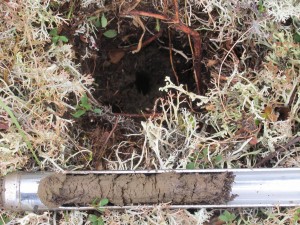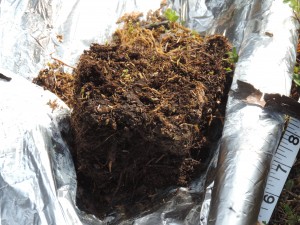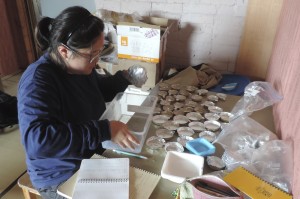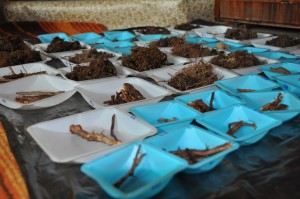When most people look at the ground they probably see lifeless brown material that they call dirt. First, dirt is not the same as soils and they should never be confused as it insults the integrity of soils. Dirt is valueless, unearthed soil. Soils that I study are invaluable materials that provide information about what is happening belowground, particularly the cycling of carbon, which greatly affects the atmosphere, terrestrial and aquatic systems. There are various biological, chemical and physical activities unfolding underneath our feet in the soils that we have yet to discover and need to better understand.
The soil is teeming with life and activity, but we can’t see it until we literally dig into the ground. Soil regulates the global climate through cycling and storage of carbon; carbon is stored in the soil in its organic form, some of which can be frozen in the permafrost. As the climate warms, permafrost will thaw resulting in more carbon mixing with the soil above and possibly released to the atmosphere. To better understand how much carbon is stored in the soils, I spent endless hours on the ground digging holes and taking soil samples for analysis.


As part of a group of students called the terrestrial survey team, I went to the field every day to measure soil depths. We selected sixteen sites that represented the diverse landscape of a small Siberian watershed in order to apply the information to the entire area. At these sites, I performed soil surgery on the ground in order to collect soil samples. First, I cut a square incision with a breadknife. Carefully inserting my hands into the wound, I carefully peel the uppermost organic layer, which is full of coarse roots and can crumble easily with the lightest pressure. The exposed mineral layer underneath is lighter in color and composed of fine minerals. After collecting and packaging samples of both layers, the surgery is complete. The operation requires patience and many hours of handling soils to be able to discern the different layers through touch, a skill I required after multiple experiences in the field.


In the lab, I analyze the soils for the amount of carbon that is stored in them. In order to get this information, I have to weigh the soils multiple times when it is wet, after it has dried, and after it has been baked in the oven and removed of all the organic matter. With the weights, I can calculate the water, organic matter, and carbon content of each soil sample. Eventually I will be able to compute the total carbon pool in the soil. Understanding the carbon pool is important because as permafrost thaws due to climate warming, more carbon dioxide can be released into the atmosphere from the soil. Knowing how much carbon is stored in the soil can give us a better understanding of how much carbon can potentially be released because of these changes.



